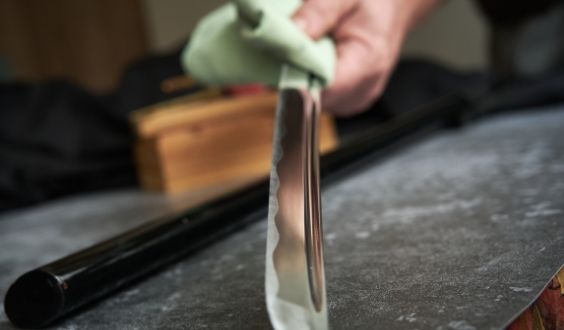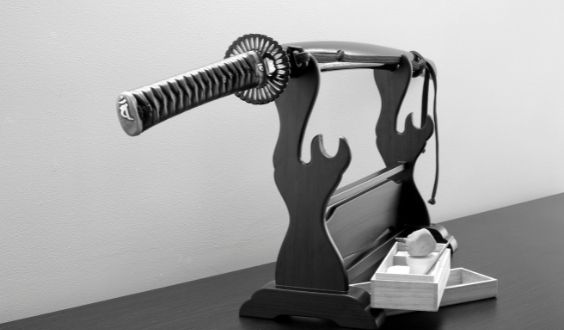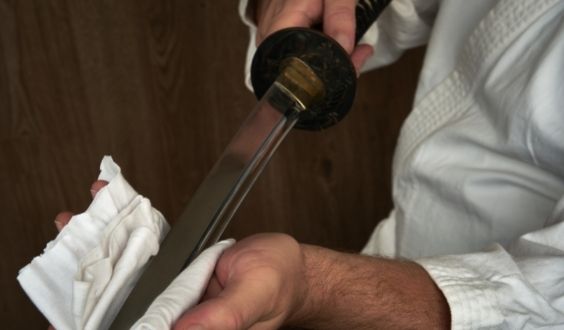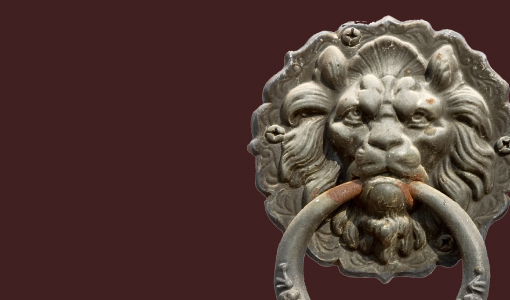Sword Maintenance 101: Basic Sword Care Tips Owners Should Know
A sword is a piece of art, history, and culture. It is also a great tool for exercise and physical activity if you are taking the time to practice with it. Just like any other valuable possession, it needs to be cared for in order to preserve its value. You wouldn’t drive your car without oil or water would you? The same idea applies with swords.
Following sword care guidelines will help sword owners get the maximum life and use of their sword. Some sword care practices are absolutely essential while others are optional, depending on a user’s preference.
Let’s take a crash sword maintenance 101 course that will list basic sword care tips all sword owners should know.

Why Sword Maintenance is Important
In order for a sword to maintain its quality and functionality, sword care practices must be followed in the best possible way. Some sword care practices are so vital that if they are not completed meticulously, it can cause major sword damage or result in an accident during sword usage. In order to get the most out of one’s sword, proper sword maintenance should always be taken seriously.
Here are several reasons why sword care maintenance is important.
- Sword care is important because any accidents that could happen due to faulty sword parts could result in serious bodily injury or even death.
- Replacing worn out or broken sword parts provides optimum safety while using swords.
- Without properly caring for swords by following all guidelines thoroughly, sword quality will deteriorate and sword functionality becomes impaired.
- Replacing broken sword parts allows a sword to remain fully functional at all times for proper sword safety. Neglecting to replace broken parts causes damage over time until the sword no longer has full functionality which poses a higher risk of accidents occurring.
- Sword maintenance will lengthen the lifespan of a sword, which saves money in the long run.
Basic Sword Care Tips
Keep the Sword at Home in Its Sheath
One of the most vital sword care tips we can offer is to ALWAYS keep a sword in its sheath whenever possible. A sword should be in its sheath at all times when not being actively handled by a trained individual, whether that is in practice or actual combat scenarios.
A leather scabbard made specifically for the sword must be purchased so as to avoid unintended accidents from occurring. In addition to protecting the blade from wear-and-tear damage from general day-to-day activities, having an appropriate sword scabbard in sword care also provides a sword with extra protection from rust and corrosion.
While sheaths or scabbards are important, sword owners must know that keeping your sword in it for extended periods of time is detrimental to the blade. The leather in the scabbard will trap the moisture and corrode the blade. Do not leave the sword in its scabbard for more than 30 days.
Finally, when wearing a sword, even when in its scabbard, do not lean it against any sharp objects such as walls or railings, to avoid getting it chipped or scratched up.

Have Replacement Sword Parts Available
Replacement sword parts are important for sword maintenance. In the case of blades that incur damage via use, sword owners can easily replace them by purchasing compatible blade replacements from reputable resellers.
Sword guards and pommels are another thing sword owners should seek out new replacements for if they find themselves worn-out or broken; these items must be replaced promptly after wear-and-tear damage occurs. If sword grips become worn down over time due to constant sword use, sword owners can remedy the situation by purchasing a sword grip replacement too.
Preventing Rust and Oxidization
Many swords on the market today are made of carbon steel. While this is a great choice of metal for swords, it is also very prone to rusting and oxidization. These two things can damage your sword greatly.
One of the biggest things that contribute to these is right under your fingers, specifically your finger marks. Apply a layer of oil or polish to prevent oxidization from occurring.
For any excess oil, a soft cloth and rubbing alcohol can easily keep your blade spick and span.
Finally, purchasing and applying a good sword oil can do wonders in preventing rusting and oxidization. While there are specific oils available for swords, certain machine oils and light mineral oils can also get the job done.
Cleaning Your Sword

It is also important to clean your sword every so often. The schedule for your cleaning will largely depend on how you are using your sword.
For instance, if your sword is on display, then it is important to clean the blade every six months. Also, remember to take the sword out of its scabbard every 30 days, no more.
If you are using and practicing with your sword though, then it is important to clean the blade every after your session.
Keep Your Swords Pristine With Great Sword Maintenance
The fact that sword maintenance is very important follows from the fact that sword owners should always protect their blades from wear-and-tear damage to avoid accidents from occurring.
By replacing broken sword parts and keeping the blade free from rust and oxidization, sword functionality remains optimal and sword owners get the most out of a sword without having to replace it altogether. If sword care guidelines are not followed properly, sword ownership can be riskier than when taking proper care of one’s sword.
Whether you are practicing with your sword or keeping it on display, it is doubly important to learn and master sword maintenance. Keep your sword in pristine condition by constantly practicing sword maintenance.
You might also wanna check IMPORTANT THINGS TO CONSIDER WHEN SHARPENING A SWORD.
